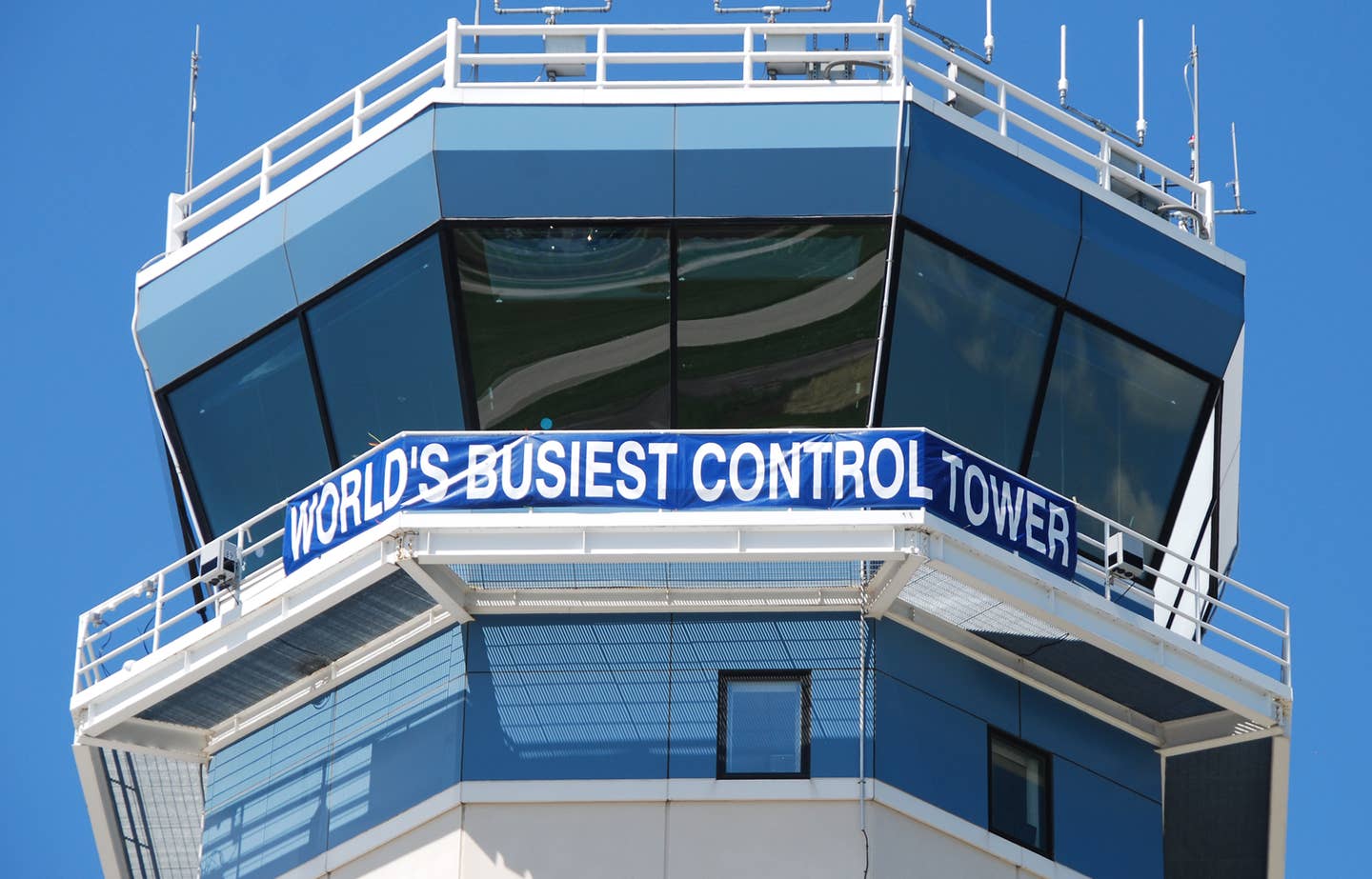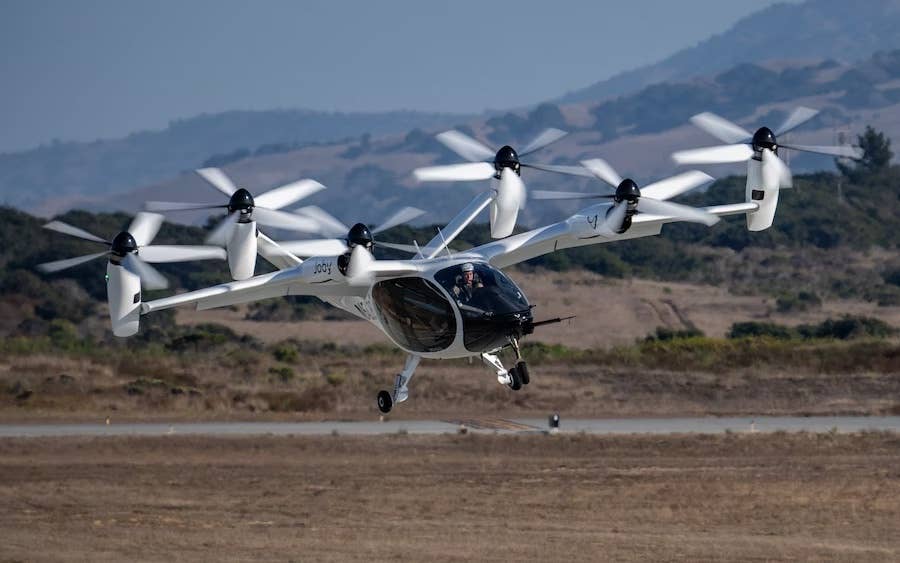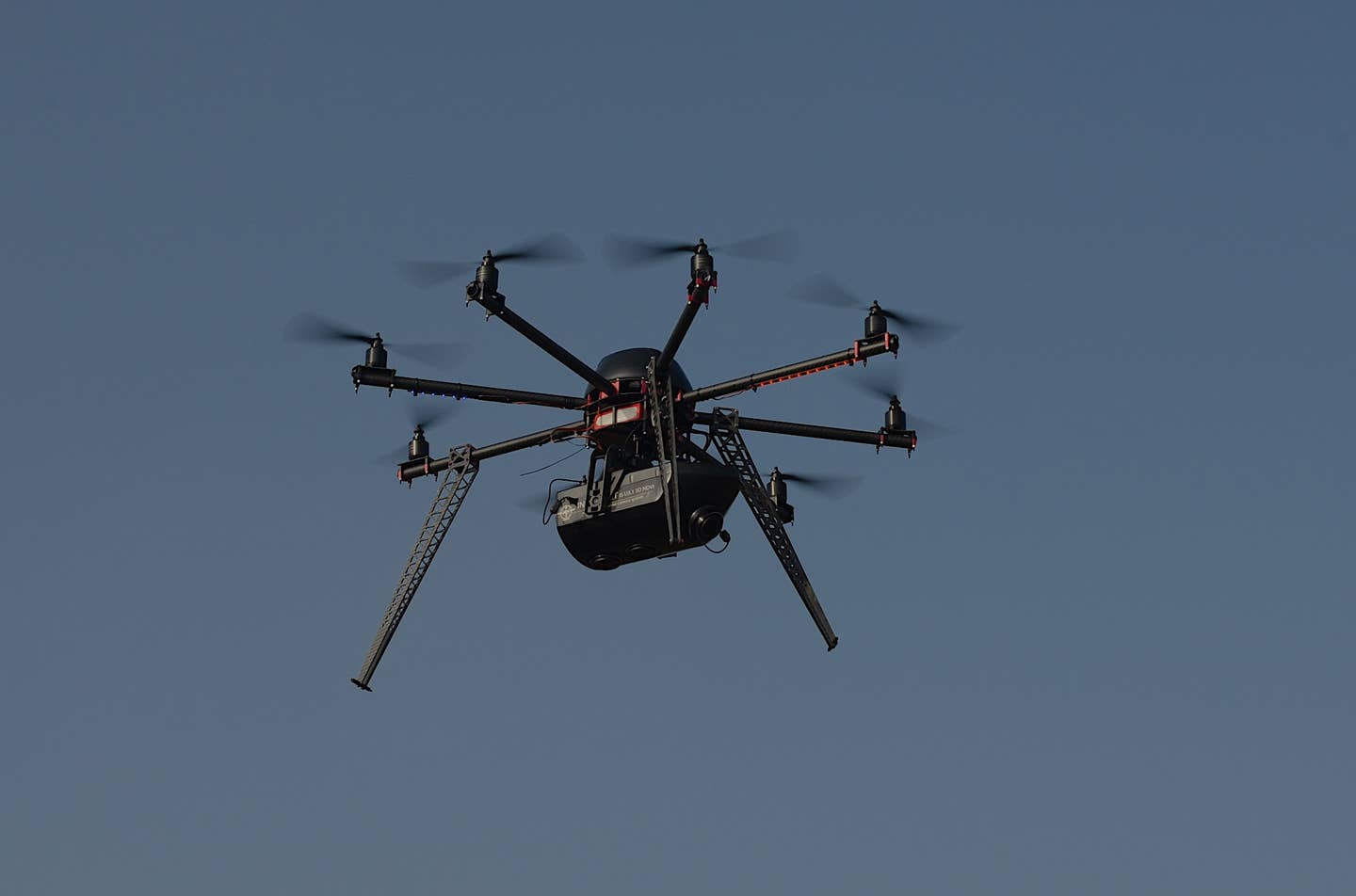New And Improved OSH Arrival
The Fond du Lac Bailout is a BT, DT. This year, here’s hoping that better planning will actually make it work.

Denny Cunningham is a retired FAA tower and ground controller and worked traffic at Oshkosh for nine years. He's a former contributor to IFR and Aviation Consumer magazines.
One of the highlights of EAA AirVenture Oshkosh is the opportunity to view restorations of vintage aircraft. The best restorations are done to a condition better than new, and often incorporate improvements in materials, instrumentation and avionics, in an effort to increase safety and reliability of the original design.
This year, the ATC folks at AirVenture, in concert with EAA and airport management at Fond du Lac Airport (FLD), are really getting into the spirit of the event—they’re going into the restoration business, too, by restoring (and improving, for an increased level of safety and reliability) a vintage OSH air traffic strategy.
Officially called the “Fond du Lac Diversion Procedure,” but already being referred to online as the FLD Bailout, details can be found on page 12 of the recently released OSH NOTAM. The idea behind the Bailout is simple: When the OSH airport closes for an extended period, give pilots who would otherwise be stuck in crowded holding patterns at Fisk (Rush Lake) and Ripon (Green Lake) an out—they can bail out of the holding pattern, head to FLD via a predetermined route and land there. And, this is key: Doing so will not forfeit their place in line for arrival at OSH. Better yet, there’s another incentive. You can keep abreast of changes instantaneously via text. Just text OSHARRIVAL to 64600 to get on the list.
While the FLD Bailout has never been published before, somewhere out there a handful of old timers are saying to themselves, “been there, done that, didn’t work.” They’re not wrong. It has been tried once before—on Aug. 3, 1983, according to my pilot logbook. And while the plan didn’t succeed that day, it did produce a hangar story that I’ve told for years—and that story made its way to the FAA and EAA officials working on ways to avoid a repeat of the chaos and confusion that occurred when the airport at OSH closed for various periods on Sunday of AirVenture 2018.
After some discussion, the basic airframe of the 1983 idea was judged to be sound; it just needed a full-up restoration, to fix known problems and incorporate up-to-date techniques and technology. So, just like those vintage aircraft restorations we all admire, this year’s version of the Bailout is an old idea, rebuilt with care and consideration, resulting in an end product that is better than the original. Or so it is hoped.
To understand why the Bailout is being incorporated as an official procedure, accept this unpleasant reality: There are times when OSH closes to arrivals for extended periods. These closures can be planned or unplanned, and occur for a variety of reasons: deteriorating weather, military or other specialized arrivals, disabled aircraft on the runway, even just oversaturation of the airport, as more airplanes arrive than there are parking spots available. Often contributing are soft ground conditions after heavy rains, which cause problems in the parking areas, as well as forcing landing aircraft to be restricted to hard surface taxiways for turnoffs. This can drastically reduce arrival capacity.
For the past 49 years, the issue of what happens to those aircraft that are airborne and inbound when the airport closes has been addressed the same way. Either land elsewhere and try again later, or enter airborne holding. Whether at Fisk, Ripon, or just over a random spot on the ground, there can be hundreds of aircraft holding west of OSH, often in marginal VFR conditions, as pilots attempt to keep their spot in the arrival chain for when things open up at the airport.
Which is exactly where I found myself that day in 1983, circling in the muck at Ripon with a hundred other airplanes, waiting for the airport to open. I was perhaps better prepared for such an eventuality than most, because a few years earlier, I’d been selected for one of the air traffic controller slots at OSH, so I knew how things worked from the ATC side. I’d done well enough as an rookie to be invited back and ended up working the tower nine times before new union rules put the most experienced gypsy controllers out to pasture; in 1983, I didn’t even apply. Controllers at my home facility (Chicago O’Hare) were still working post-strike six-day weeks and 10-hour days, so there was no way the facility would release me for a TDY assignment at OSH.
We decided to make the best of things and just fly up for the day in our Cessna 140. Navigating solely by pilotage and a Hamilton card compass, I pointed the airplane in the general direction of Ripon, encountering nothing worse than light rain showers for most of the way. But the closer we got to Ripon, the worse the showers became. By the time we arrived at the Green Lake holding pattern, Oshkosh was IFR.
As the weather worsened, I left the holding pattern and headed for Fond du Lac—then non-towered—knowing that if the weather didn’t improve, we could always take the bus from there. Within minutes of our arrival, at least 50 other airplanes diverted there and soon, most of the pilots were milling around the FBO.
As we continually checked OSH weather for updates, pilots began planning for the Le Mans start of the race toward Ripon that was sure to come once the weather came up. A race I was sure to lose, since with only 85 horsepower in my 140, I was certain to be one of the slowest in the field. The idea of stooging around Ripon and Fisk in marginal visibility with a mob of other airplanes had little appeal, so I considered alternatives and came up with one that I thought was pretty good: cheat.
From my experience working OSH Tower in previous years, I knew the number for the direct line to the tower cab, and I knew the tower supervisor who answered the phone. He listened as I explained both my predicament and my plan—and agreed to it. I hung up the phone, got the attention of the crowd of pilots, and made my pitch:
“Listen, we all know what’s going to happen when OSH goes VFR—we’re all going to head toward Ripon in a gaggle, where we’ll join those guys that have been in airborne holding, not to mention all the other gaggles that diverted to other airports that will be doing the same thing. It’s going to be ugly—but for those of you that are willing, I’ve negotiated a deal with our friends at Oshkosh Tower which should put us on the ground at OSH far more quickly, safely and efficiently—and without having to get involved with the circus at Ripon and Fisk. Now, who’s interested in joining me?”
Everybody was, at least at the start. So, as I’d promised the supervisor at OSH, I gave the pilots a thorough briefing to set things in motion: OSH Tower would call me at the FBO when the weather started coming up. Upon receipt of that call, we’d need to get to our airplanes without delay, taxi out, and wait for them to call the FBO back with a release, which the FBO would relay on Unicom. We would be ignoring the published arrival procedure and instead fly northbound on the western shoreline of Lake Winnebago, in anticipation of landing straight-in on Runway 36. That runway would be ours until we were all down. Tower would send traffic arriving on the published Fisk VFR arrival procedure to Runway 27 or 9 until we were done.
I cautioned that the tower was expecting us to provide our own separation and spacing, and to follow the same rules as the Fisk arrivals: single file, 90 knots, 1800 feet, no side-by-sides, no passing. “If you do it right, you’ll be following the same airplane from taxi out at FLD, to landing at OSH.” Tower would treat us as a formation flight, which I would lead, and I’d be the only airplane talking on the radio. When I contacted the tower at Warbird Island, they’d issue a single landing clearance that was good for all of us. Everyone should monitor tower frequency, but there should be no reason to talk—tower would only intercede if they thought it necessary, in which case they’d call a specific airplane by color and type.
Most of the pilots were enthusiastic. A few opted out, some uncomfortable with the idea of being part of an ad hoc formation flight, others with the fact that they had no official authorization to ignore the published arrival procedure—just the word of some random guy who claimed to have the inside scoop. A Navajo pilot, who couldn’t fly at 90 knots, said he would make things work by making shallow S-turns. I told him to follow me, and promised to land not only well down the runway, but on the left side of centerline, leaving him plenty of room to land behind me on the right.
An hour went by, and then the call came: Visibility was coming up, get your guys ready. We scooted out to the airplanes and taxied out, barely getting to the runway before Fond du Lac Unicom relayed the message from OSH Tower: They were still experiencing some light rain showers, but the field was VFR. We were released.
And it went great. The pilots displayed radio discipline, skill and cooperation. Every once in a while I’d get a glimpse of the Navajo as he sashayed back and forth to stay behind me, and behind him a line of airplanes as far as I could see. I was pretty proud of myself—not only would we make it into Oshkosh long before we would have via the far more treacherous NOTAM procedure, but the controllers at Fisk would have fifty fewer airplanes to sort out; a win/win for both sides of the equation.
Approaching the Island, I keyed up and announced, “Oshkosh Tower, Cessna 2300N is over the Island, flight of 50, Runway 36 in sight.” But, rather than issuing the expected landing clearance, the tower controller replied, “Denny, I’m not quite sure how to tell you this … but the visibility at Oshkosh is now two miles, and the field is IFR. Say intentions.”
My intention was to slap the crap out of the Oshkosh controller who made the decision to issue a fresh weather observation at such an inopportune time. In those days, such observations were all done by humans, and it was considered good form to use discretion with regard to the current traffic situation before making one. But that would have to wait, because we weren’t going to be getting to the airport anytime soon, and I hadn’t briefed any sort of plan to return our gaggle to FLD. That’s when my FLD Bailout went from what seemed like a good idea to near chaos, as we all started the willy-nilly rush back to the airport.
On the ground, most of the pilots took our defeat in stride, and thanked me for trying—but few were up for trying it again when the weather improved. Eventually, we all rushed to Ripon (where things were as ugly as anticipated), but in the end we were safely on the ground where we wanted to be. Visiting the tower, a very apologetic Oshkosh controller explained that he hadn’t been informed of the inbound FLD flight, so hadn’t seen any harm in issuing the new weather observation when the weather began to deteriorate.
So, what’s changed in the intervening 36 years that will ensure that the restoration of my improvised FLD Bailout works out better than the original? First, by officially sanctioning the procedure and including it in the NOTAM, pilots will be aware of the option and can incorporate it into their flight planning. Plus, EAA is involved, supplying volunteers on the ground at FLD to segregate and organize aircraft that divert there in anticipation of a release to OSH when the airport reopens. Airport management at FLD is also onboard, agreeing not only to provide a dedicated parking area for aircraft utilizing the procedure, but to waive the landing fee for those that do so.
Most important, FLD is now a towered field during AirVenture, and the FAA is confident that the controllers at FLD are up to the challenge—after all, they managed to put over 100 Bonanzas safely on the ground last year during the Sunday fracas, then get them up to OSH later, and that was with no prior notice or planning. FLD Tower is staffed by Oshkosh pink-shirted controllers, who will be well briefed on the procedure during their annual training day. One major change from ’83: No formation flight will be required—each aircraft will be cleared for takeoff at FLD individually, in a manner similar to that used by the controllers next to the runways at OSH, using color and type if the N-number isn’t known. OSH Tower controllers will provide normal handling to the arrivals from FLD, so pilots need to be familiar with the NOTAM arrival procedures, such as landing on the appropriate colored dot.
To be sure that all pilots involved are on the same page, a tower supervisor from FLD (or his EAA designee) will provide a mass (and mandatory) briefing, detailing the route, runway, frequencies and other necessary information for the short hop from FLD to OSH. While my original plan involved only Runway 36, the new-and-improved version has contingencies for landings on 36L, 36R, 18R, and Runway 27. And, since FLD Tower will have direct communication capability with OSH Tower, controllers at FLD can provide nuance to the departure flow, adjusting spacing to meet OSH Tower requirements.
While the intent is to use first come, first served for the leg from FLD to OSH (matching the order of departures to OSH to the order of their arrival at FLD), don’t expect that to be a hard and fast rule. Tweaks to the sequence may be made for operational reasons or to better accommodate specific requests from OSH Tower. For instance, it’s anticipated that all aircraft will be using a single altitude, so it’s possible that major speed differences will be best accommodated by simply putting the faster airplanes first.
Note that all of this applies only to those aircraft that specifically diverted to FLD during an OSH closure, with the expectation of continuing to OSH when able. Unless otherwise authorized, aircraft that simply decide to use FLD as an overnight, refueling, or pit stop will not be allowed to join the group, and will still need to follow the regular Ripon/Fisk arrival procedures, as published in the NOTAM.
Although the NOTAM is a little vague, saying only that aircraft intending to return to Oshkosh after using the FLD Bailout would receive “… expedited handling when conditions permit,” the intent is clear: When the airport at Oshkosh closes for an extended period, give pilots an incentive to put their aircraft safely on the ground at Fond du Lac without fear of losing their place in line. Rather than milling around in a holding pattern, wondering which will come first, maximum bladder or minimum fuel, the occupants of FLD Bailout airplanes should be able to relax comfortably and safely on the ground, while still ensuring they’re among the first in line when OSH starts accepting arrivals again.
When the FLD Bailout airplanes are released, there will be only a short window of time available to get them airborne before the airport at Oshkosh is inundated with aircraft, since traffic in the holding patterns will be released shortly thereafter. It’s anticipated that Bailout airplanes can all be accommodated on Runways 36, while arrivals from airborne holding can safely flow to a right downwind for 27. But the faucet at Fisk may even be turned on simultaneously. Consequently, pilots diverting to FLD via the Bailout would do well to stay close to their airplanes, ready to go on short notice. If you see that the pilot of the airplane parked next to you has wandered off, best go find him—anyone that misses the starting gun is likely to lose the priority intended as a reward for those who took the opportunity to wait things out safely on the ground at FLD.
While some in the online pilot forums fear being forgotten at FLD, such fears are probably unfounded—the FAA is well aware that if they don’t provide the promised priority when time comes to head to OSH, word will spread quickly, deterring pilots from using the procedure—and possibly setting up another scenario such as OSH experienced on Sunday last year, which many AirVenture veterans describe as the worst they’d ever seen.
Nobody wants that, of course, so if you find yourself in the vicinity of OSH and the airport is closed, consider giving the FLD Bailout a try. The FAA, EAA, and FLD are putting a lot of effort into this restoration—and while they don’t expect to win a Lindy for Best Restoration of a Vintage Air Traffic Control Procedure, they want it to work. As do I—despite the unfortunate outcome of my efforts 36 years ago, I thought it was a good idea then, and I still do. Hopefully, vindication is at hand.






